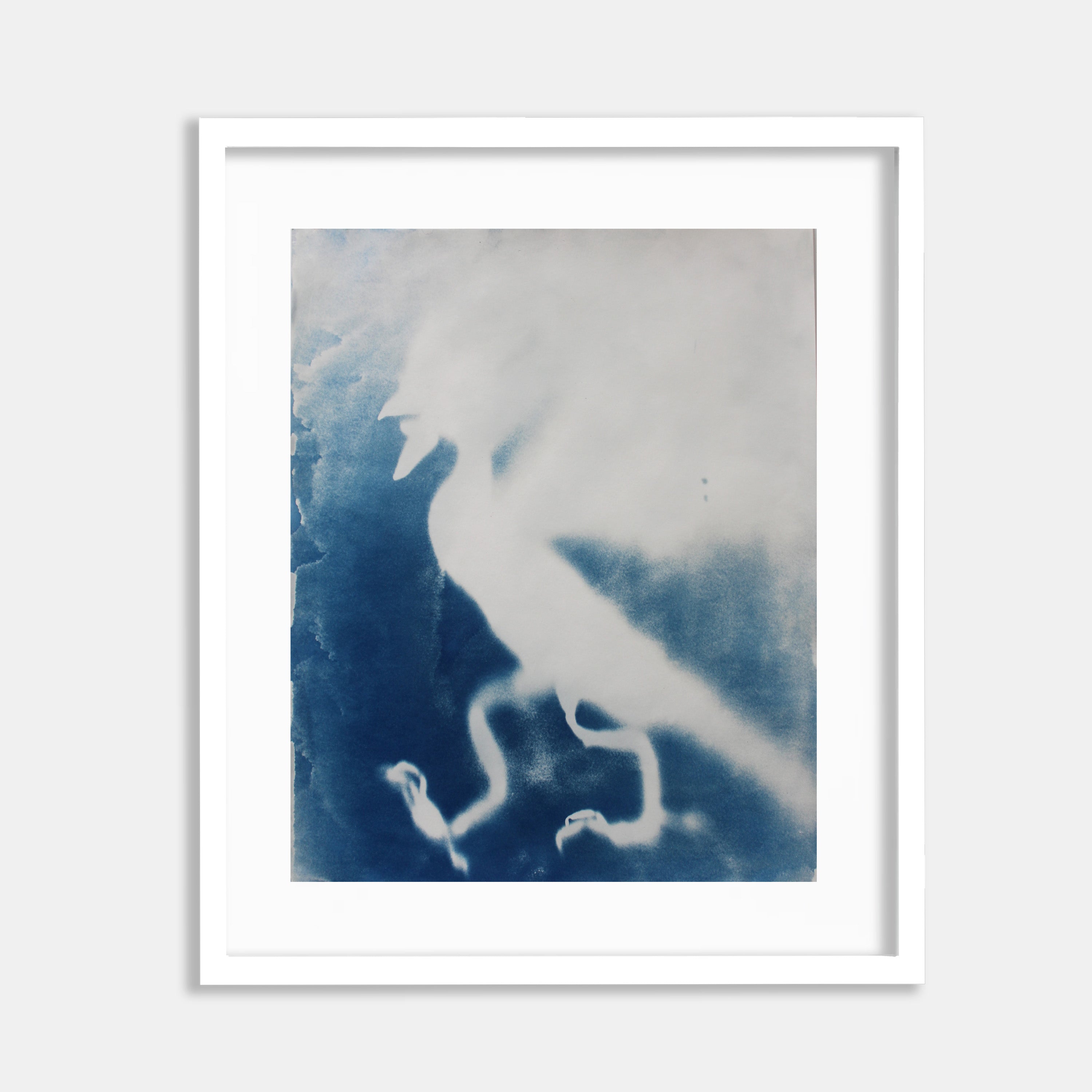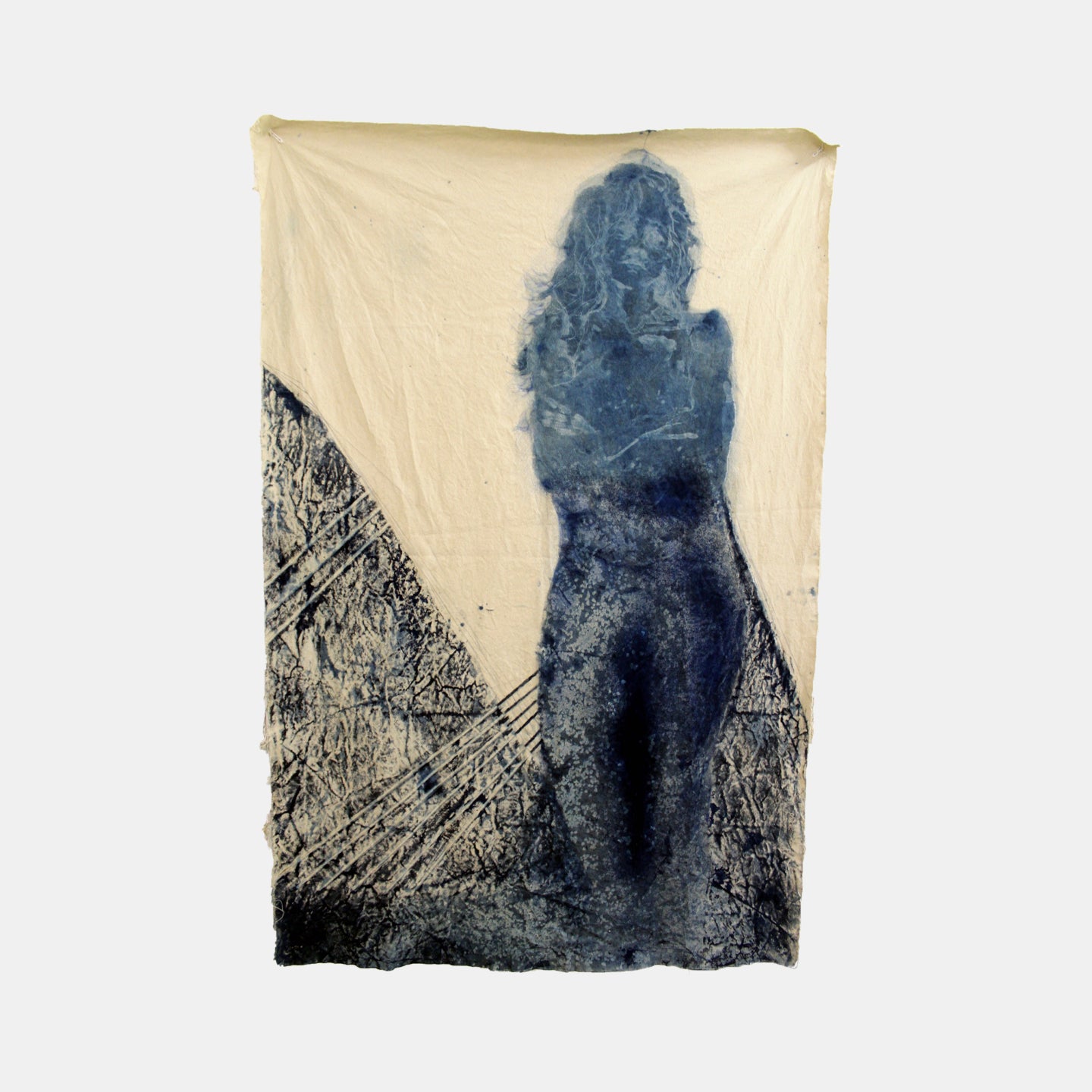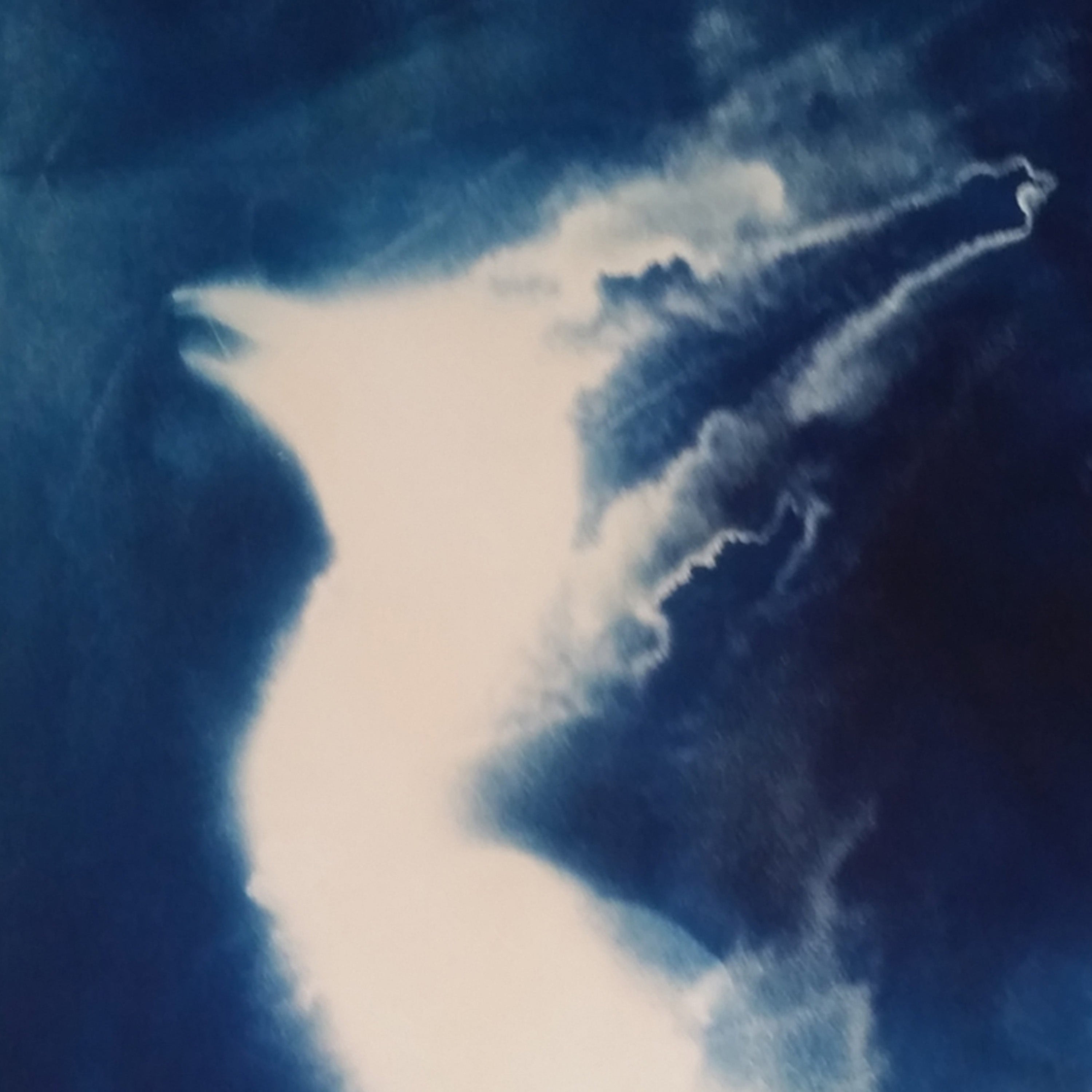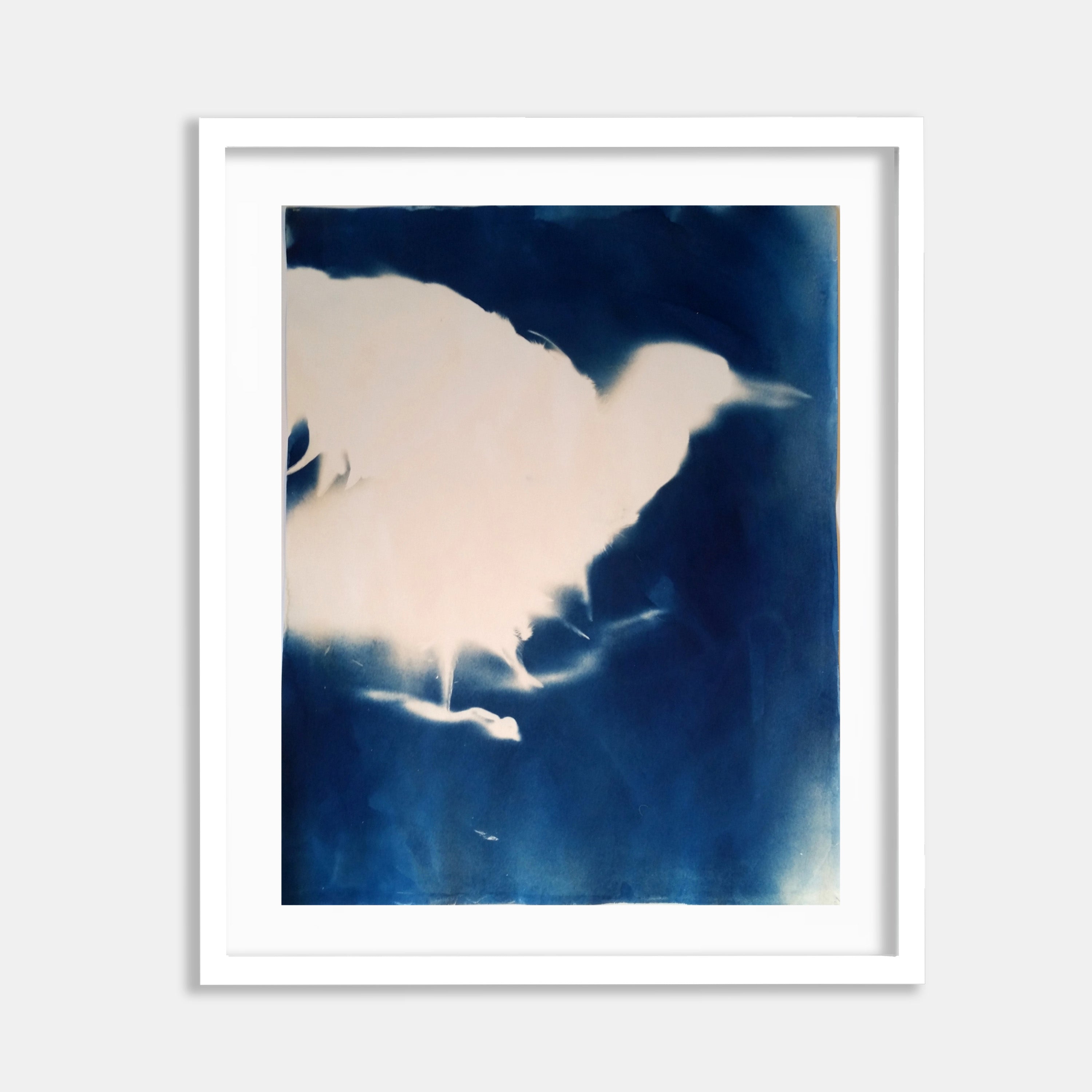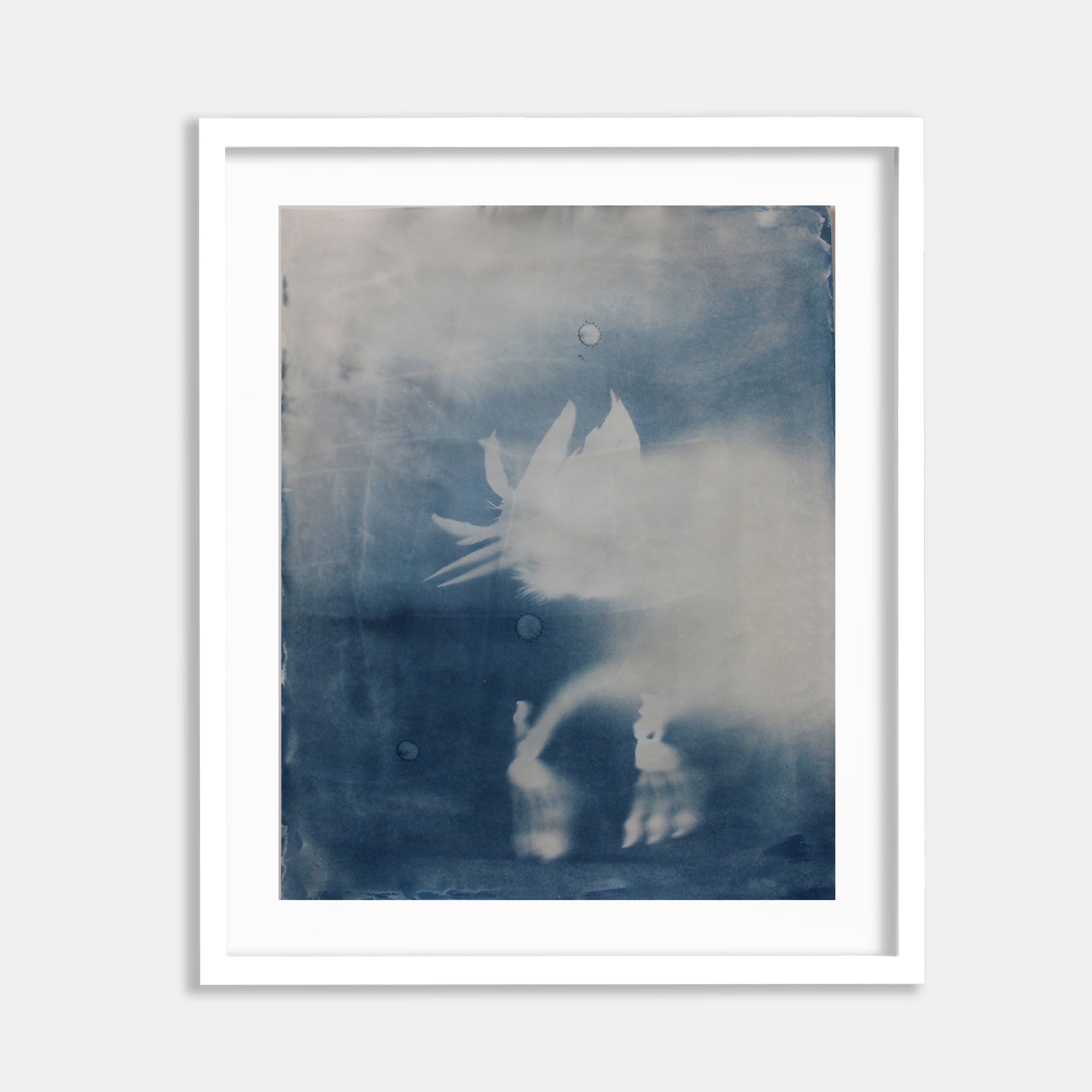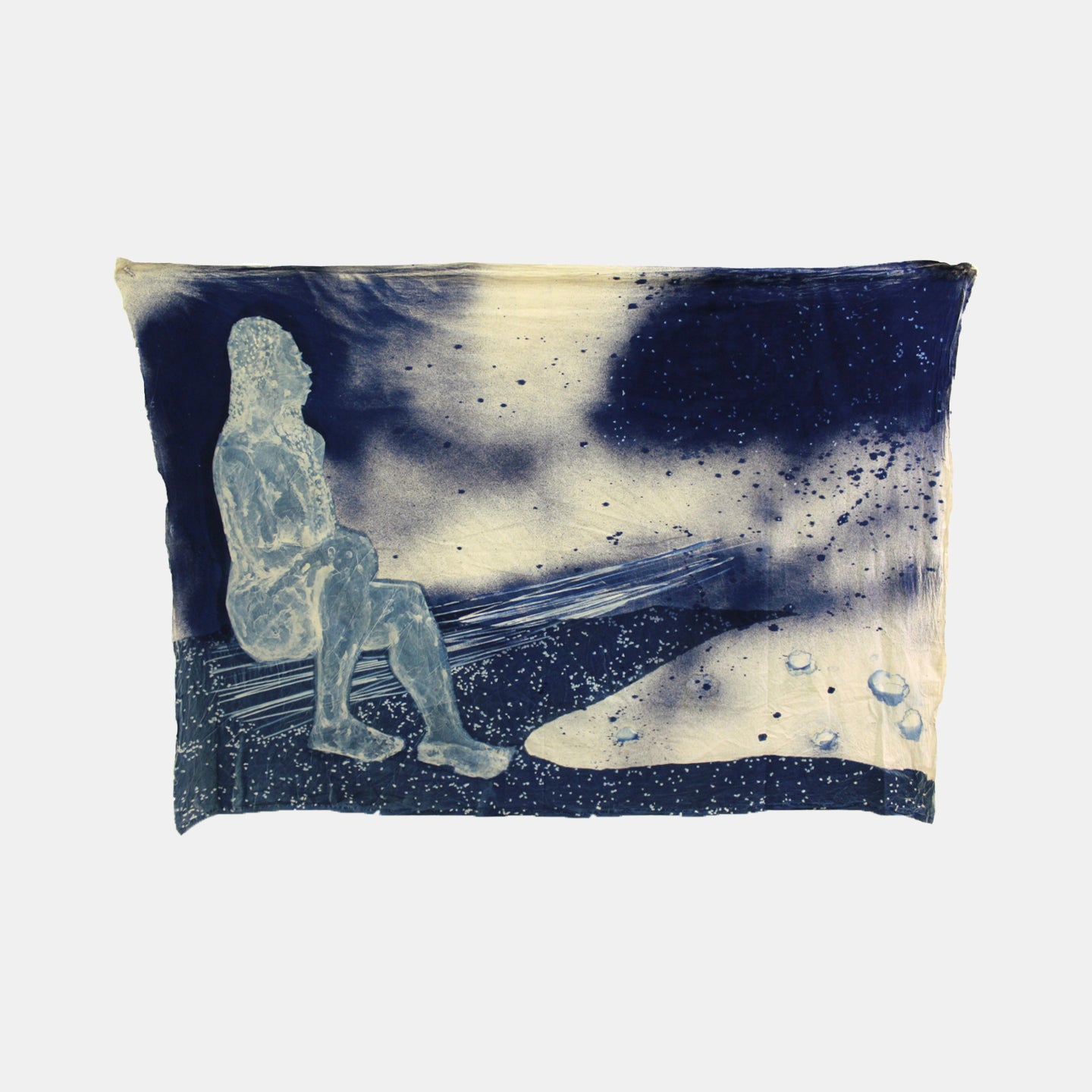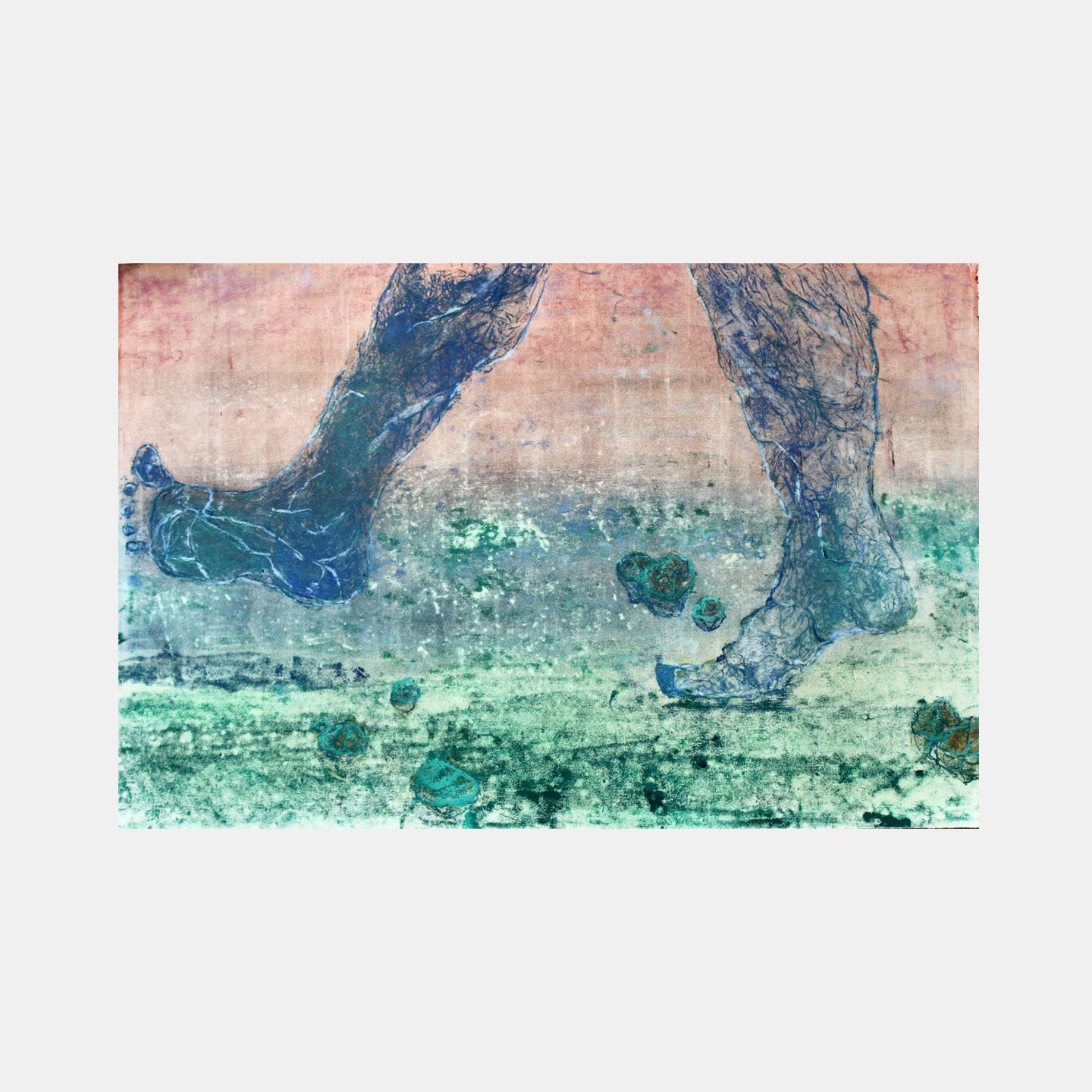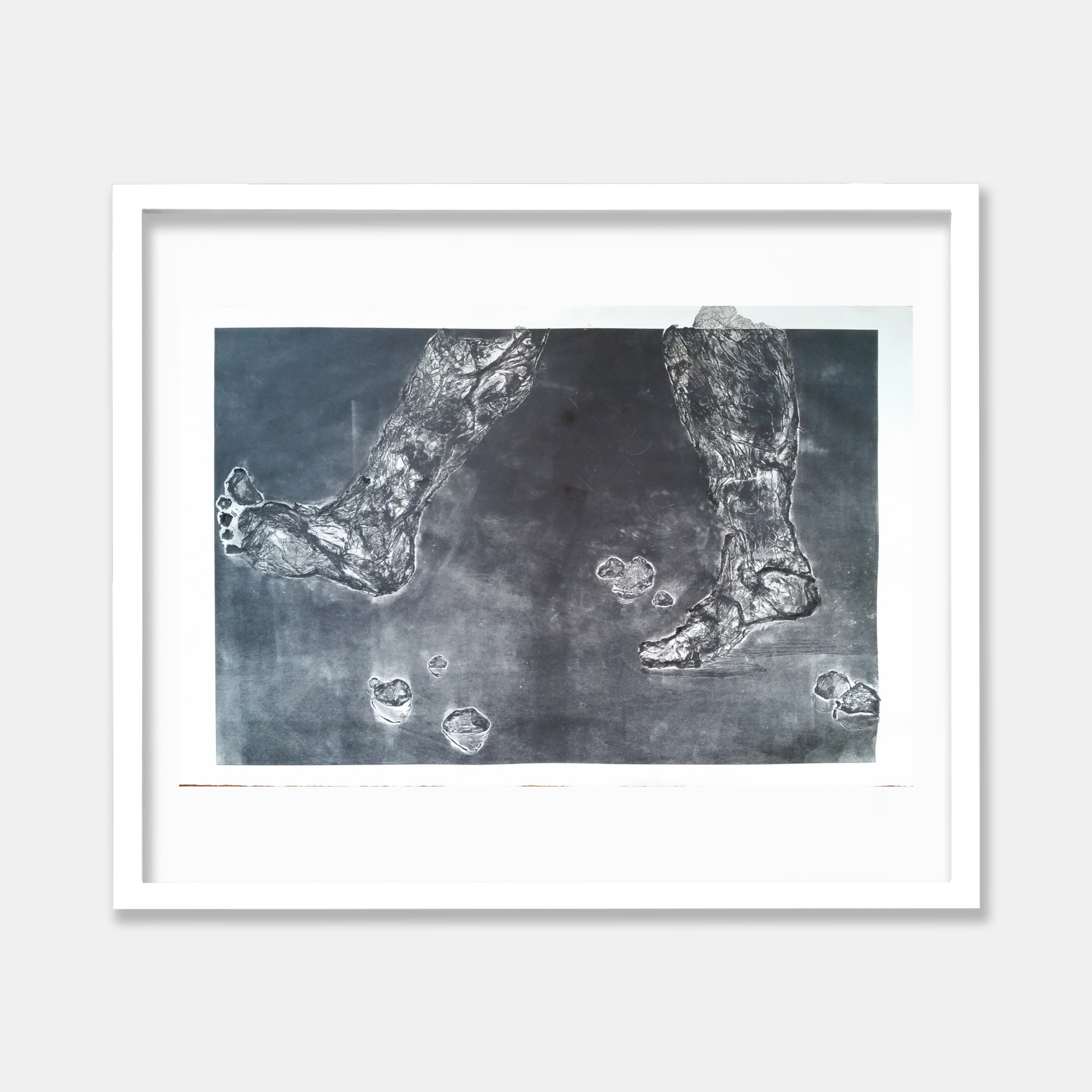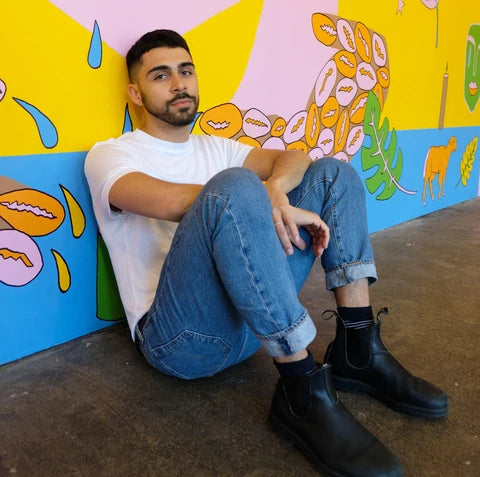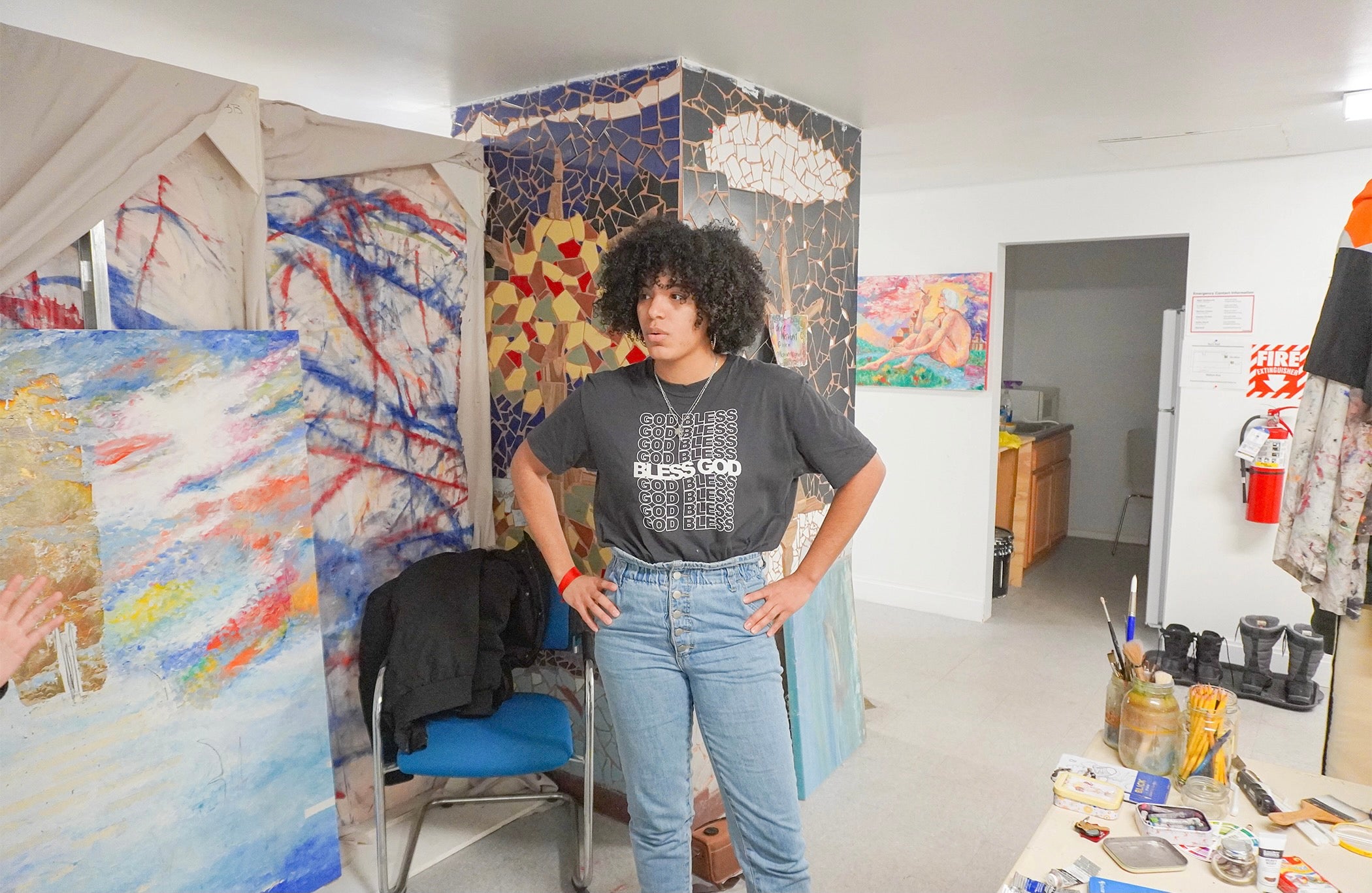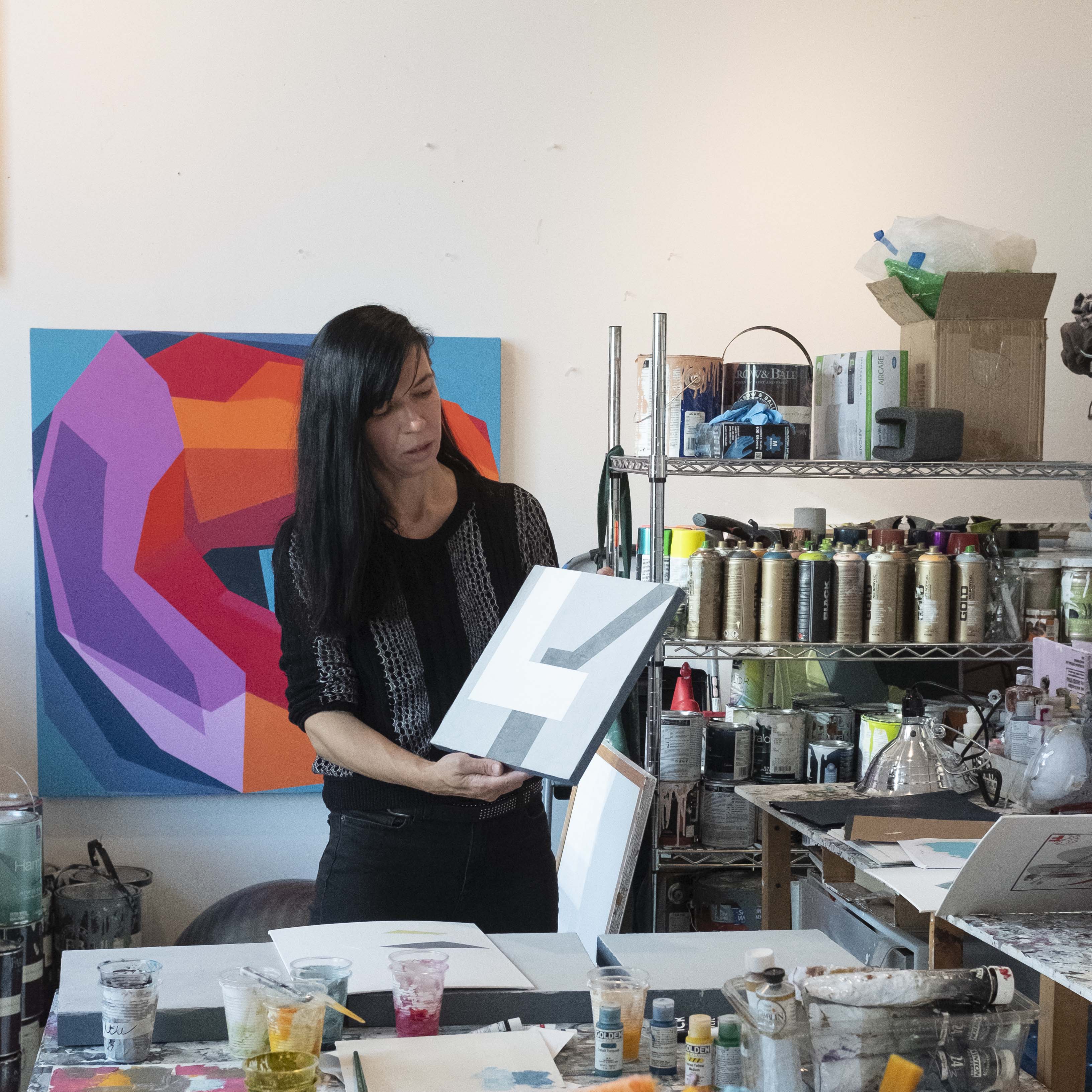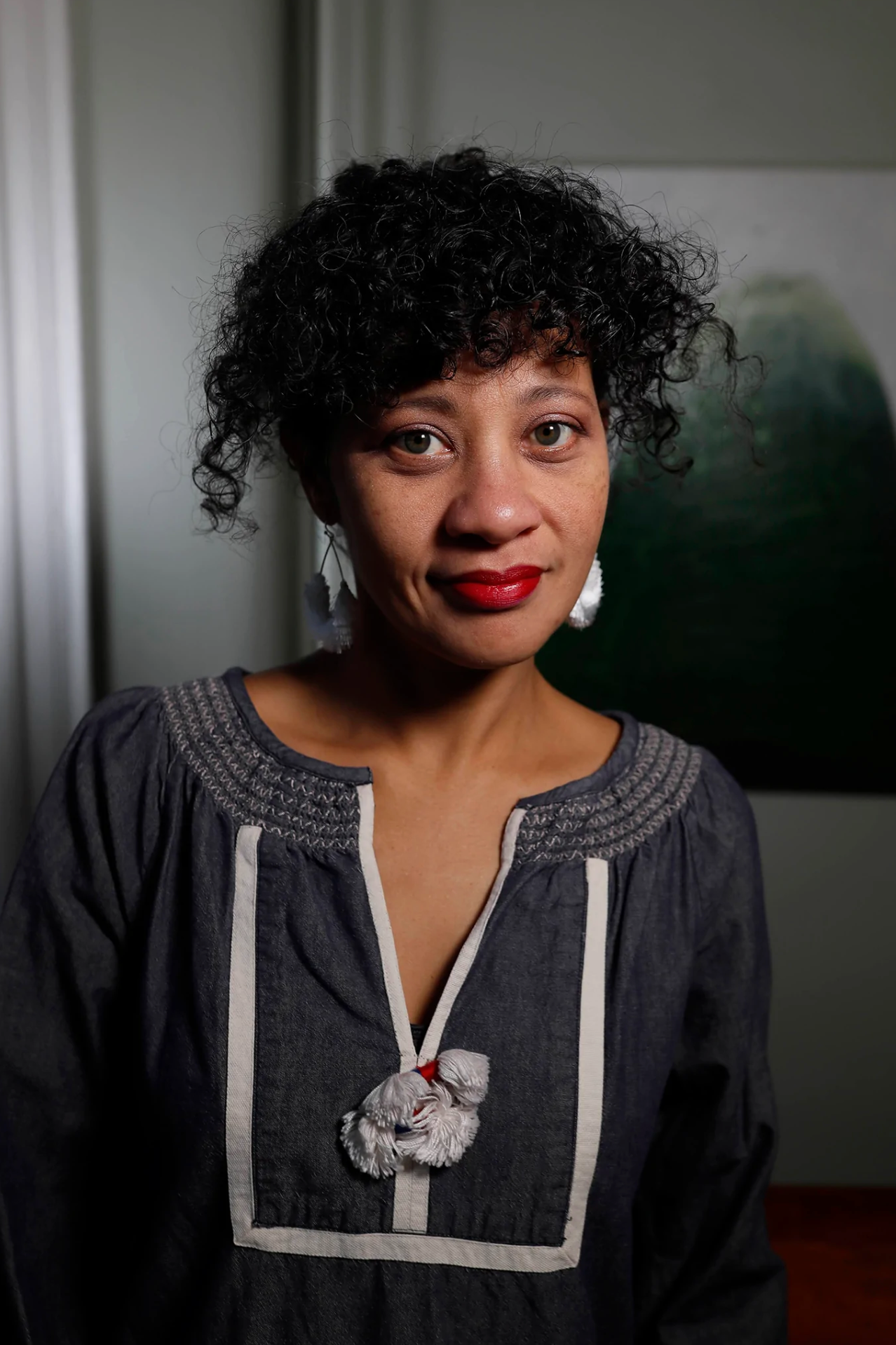No Products in the Cart
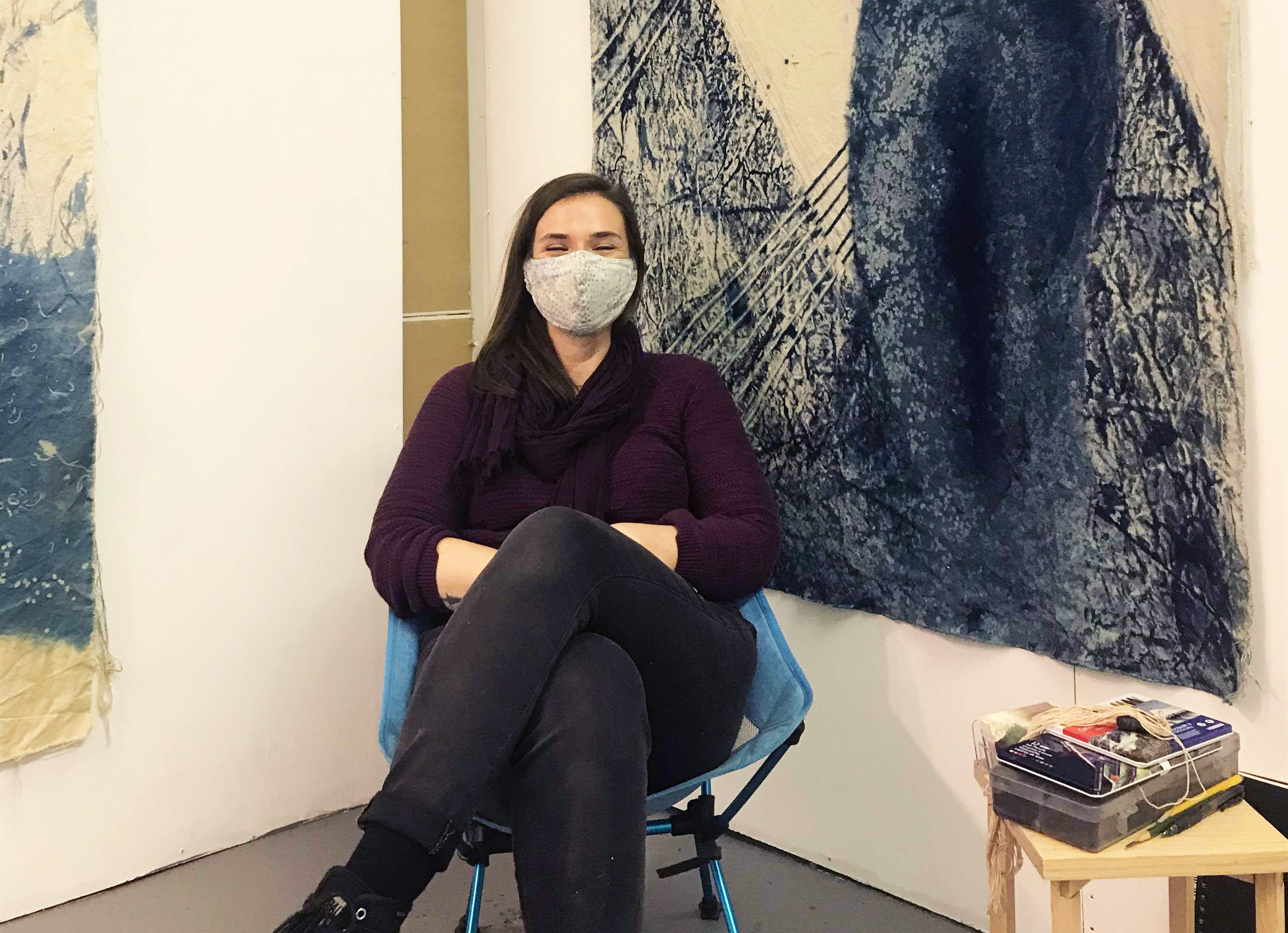

Johanna Aenderl Ryan is an emerging artist primarily focused on utilizing printmaking methods in a painterly way. She was born and raised in Minnesota. Growing up she spent her summers swimming in lakes, going camping, and living most of her formative years next to a wetland.
Hannah: What is a cyanotype?
Johanna: Cyanotype is a printing process using light. You apply a photosensitive solution to paper or fabric. Then you place objects on top you’d like to get an image of. When you leave it in sunlight, the sun turns blue parts that are not obstructed by your object, so the image will appear in different shades of white or whatever color your substrate is (like a photo negative).
But the resulting image actually isn't’ just flat! Because the sun works around the texture and thickness of the object, you can see the layers - or different angles and degrees to which the sunlight reached - reflected in the finishing result.
H: If it involves chemicals, have you had any trouble making cyanotypes during the pandemic?
J: It’s not actually the chemicals but the size that I work in! I have paintings that are eleven feet on one side *laughs* so I can’t really hang it on a wall at my place. I’m glad to be back in the studio now.

On the right wall hangs Open To Interpretation.
H: You mention cyanotypes being a scientific medium back in the days. How did you first encounter it, and what’s your twist on it?
J: Before I started cyanotypes, I was really interested in layering. I would use plastic substrates but always felt conflicted about that because it’s not great for the environment.
So when someone introduced me to cyanotypes over a year ago, I loved the layering component of it. But I also like that it gets embedded into whatever material you’re using. Like a collage, except in one cohesive piece.
My twist would be taking it away from being a scientific, objective tool. I see it as mark-making, then also distancing myself from the marks made. I would take the mark and let the sun to work with the material, too, to create almost a collaboration.
Collaborating with Nature


WORKS BY THE ARTIST
H: How do you balance out the intentional, man-made elements and unpredictable elements in your process?
J: I love working with nature because it makes me react to its spontaneity. But I also get a lot of inspiration from science, or our understanding of nature. It’s a balance between letting nature be and trying to understand it is important, definitely.
Cyanotypes can be really unpredictable. I remember starting with one of my background drawings and got oversaturated by the sun. It ended up a blue blob! At which point you have to start back at the beginning.
 |
 |
H: It definitely seems like you’re channeling not nature in itself but your interactions with it.
J: Yes, a lot of my pieces are about bodily experiences. Especially ones that are just hands or feet. What does it feel like to be moving, grabbing things, exploring?
H: So those works are prints, right? I think people including me think of clean-cut, black-and-white lines when we hear “print”. How do you create the watercolor-like effect in yours?
J: For some of them I do use watercolor. I paint watercolor on plexiglass, let that dry, and take a piece of paper to run over it.

Detail of Open to Interpretation
H: Is that where your interest in Ecofeminism comes in, as well?
J: I did a good amount of research, and I think there’s been a few different developments. In the 70’s it was like “women ARE nature, or women have a special connection to nature.” But we are all a part of nature - it’s the hierarchical relationships we (humans) created that mean some people will be impacted by environmental damage more closely than others. Lower-income populations or developing countries for example.
I do have a draw to depicting women, though. That’s an intuitive place I go to because I grew up in a family that was almost all-women.
From One Medium to Another...
 |
 |
(Left) Johanna Aenderl Ryan, Embryonic Stage 8 / (Right) Johanna Aenderl Ryan, Embryonic Stage 2
H: Your Embryonic Series are very chimerical. How did you come up with this idea and how do you make models?
J: A lot of the work I do is very iterative.
I started by making models that would be part of an animation, but as I was developing them, I wanted to document them at each stage, too. The fact that if I document the models at a certain point they will never be the same is kind of like what I love about the effect of changing sunlight and atmosphere on cyanotypes too.
 |
 |
The models Johanna uses to make animations and cyanotypes. They are built with metal bones then fleshed out with pillow stuffing and clay.
H: Oh right, you do video work as well! Did it come before or after the two dimensional work?
J: My initial vision was based on using the puppets for videos. So the video idea was first, then the different ways of documentations were inspired by that.
Watch one of Johanna's animations here: https://youtu.be/YPFYxx3Q4h0
H: If you are inspired by nature, does your working environment closely affect you?
J: I grew up around the wetlands so I was always surrounded by nature.
Then moving to New York, to Brooklyn - it’s been twelve years now - I also came to notice these moments of nature being around even here. We’re right on the bay area here in Sunset Park, and inside this old industrial building (Brooklyn Army Terminal) there’s moss growing.


The interior of Brooklyn Army Terminal where Johanna works.
H: Any favorite spots in Sunset Park in general? Greenwood Cemetery is my personal favorite.
J: I actually did just go to Greenwood myself two weeks ago! That was right before we had the rainfall and all the leaves fell off. So I could still see the fall leaves.
I also don’t live too far from my studio so I walk about two miles always taking advantage of the bay or new streets. It’s been nice to be able to enjoy the outdoors especially when we’re usually stuck inside.

Johanna’s weaving made of recycled plastic bags, on the very left.
H: There’s so much to explore with just cyanotypes and printmaking. But if you were to expand to another medium or material, what would that be?
J: I’m thinking about bringing in embroidery as a mark-making method, because I’ve been weaving a bit at home.
H: What are you reading / listening to / watching nowadays?
J: I love science fiction but with the pandemic it feels a bit too real.. *laughs* But I would highly recommend N.K Jemisin.

In my chill time, I love watching baking shows while I weave. The Great British Baking Show is my favorite! There was actually a pottery show that’s similar to that, I love watching people making things.



